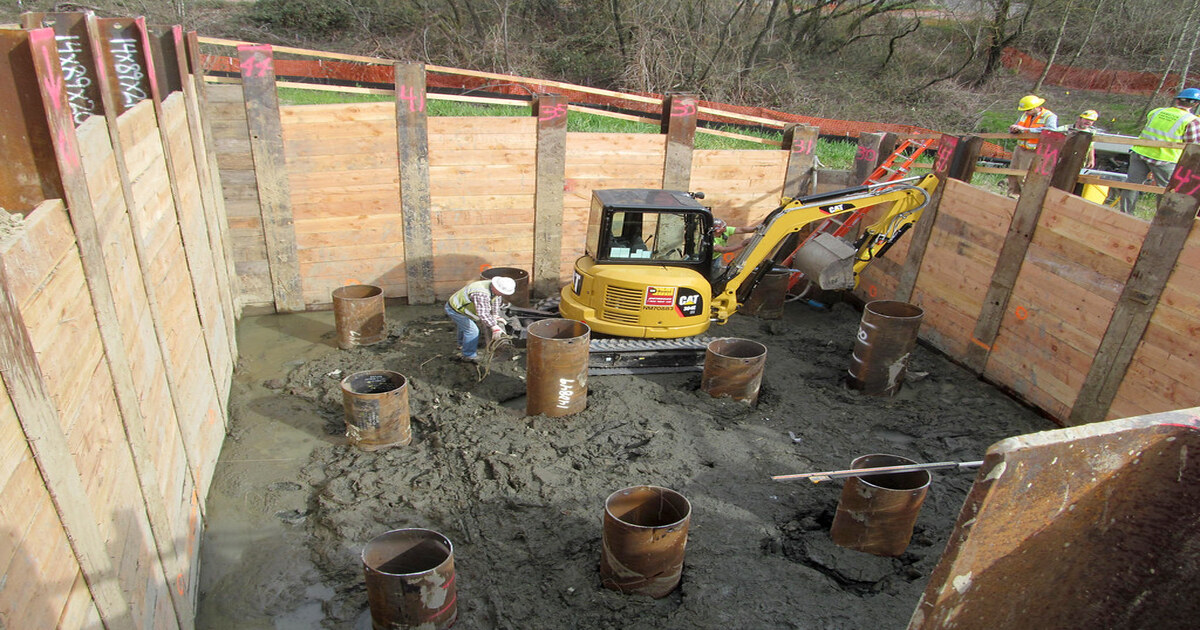Introduction
Piles are fundamental structural elements in deep foundation systems, designed to transfer loads from structures to deeper, more stable soil layers. Determining the allowable load on a pile is crucial for ensuring the safety, serviceability, and cost-effectiveness of construction projects. This article explores the key factors influencing allowable loads on piles, referencing real-world case studies to illustrate best practices.

Factors Influencing Allowable Load on Piles
The allowable load-carrying capacity of a pile is primarily determined by two main components:
1.Geotechnical Capacity: This refers to the pile’s ability to bear loads based on soil strength and consists of:
- End-bearing resistance (tip resistance)
- Skin friction resistance (shaft resistance)
2.Structural Capacity: The material properties and cross-section of the pile determine the maximum stress it can sustain without failure.
Other key factors include:
Pile Type: Driven piles, bored piles, and helical piles each have different load-bearing behaviors.
Soil Conditions: Cohesive vs. granular soils significantly affect pile performance.
Installation Method: Driving resistance, vibrations, and soil disturbance can alter load capacity.
Safety Factors: Regulatory codes recommend specific factors of safety to ensure reliability.
Methods for Determining Allowable Loads
There are multiple ways to determine the allowable load on a pile, including:
1.Static Load Testing
This is the most reliable method, where a test load is applied incrementally to a pile while measuring settlement. The load at which excessive settlement occurs defines the pile’s ultimate capacity. A factor of safety (typically 2 to 3) is applied to determine the allowable load.
2.Dynamic Load Testing
This method is commonly used for driven piles. It involves striking the pile with a hammer while monitoring stress and displacement using sensors. The collected data is analyzed to estimate load capacity.
3.Analytical Methods
Empirical formulas based on soil investigation reports are used to predict pile load capacity. Some commonly used equations include:
- Terzaghi’s bearing capacity formula
- Meyerhof’s method
- Hiley’s formula (for driven piles)
4.Pile Integrity Testing
This technique ensures the pile remains structurally sound without defects that could impact its load-bearing capacity.
Case Study: High-Rise Building Foundation in Clayey Soil
Project Overview
A 30-story commercial building was planned on a site with predominantly soft clay deposits. Due to the weak soil conditions, a deep foundation system using bored piles was selected.
Pile Design Considerations
- Pile Type: 1.2m diameter reinforced concrete bored piles
- Soil Profile: Clayey soil up to 25m depth with a dense sand layer below
- Load Requirements: Each pile needed to support 2,500 kN
Testing & Results
- Static Load Test: Applied load increments showed a failure threshold at 7,500 kN. With a factor of safety of 3, the allowable load was determined as 2,500 kN per pile.
- Dynamic Load Testing: Verified similar results, confirming minimal settlement and adequate load distribution.
- Integrity Testing: Ensured pile continuity and absence of voids.
Outcome
The designed foundation system successfully supported the high-rise building with negligible settlement, validating the importance of comprehensive load testing.
Best Practices for Determining Allowable Load on Piles
- Conduct Thorough Soil Investigations: A detailed geotechnical study is essential before designing piles.
- Perform Load Testing: Whenever feasible, static load tests provide the most accurate assessment.
- Use Safety Factors Appropriately: Follow regional guidelines for appropriate safety margins.
- Account for Long-Term Effects: Consider potential soil consolidation and time-dependent settlement.
- Monitor Pile Performance: Regular inspections post-installation help detect issues early.
Conclusion
Determining the allowable load on piles is a critical aspect of foundation engineering. By combining soil data, load testing, and engineering judgment, reliable and efficient pile foundations can be designed. The case study discussed highlights how practical evaluation methods can ensure successful project execution. Following best practices in pile load assessment minimizes risks and enhances structural integrity, making it a key focus for engineers and construction professionals.


The subsequent time I learn a weblog, I hope that it doesnt disappoint me as much as this one. I mean, I know it was my choice to learn, but I truly thought youd have one thing attention-grabbing to say. All I hear is a bunch of whining about one thing that you may repair when you werent too busy searching for attention.